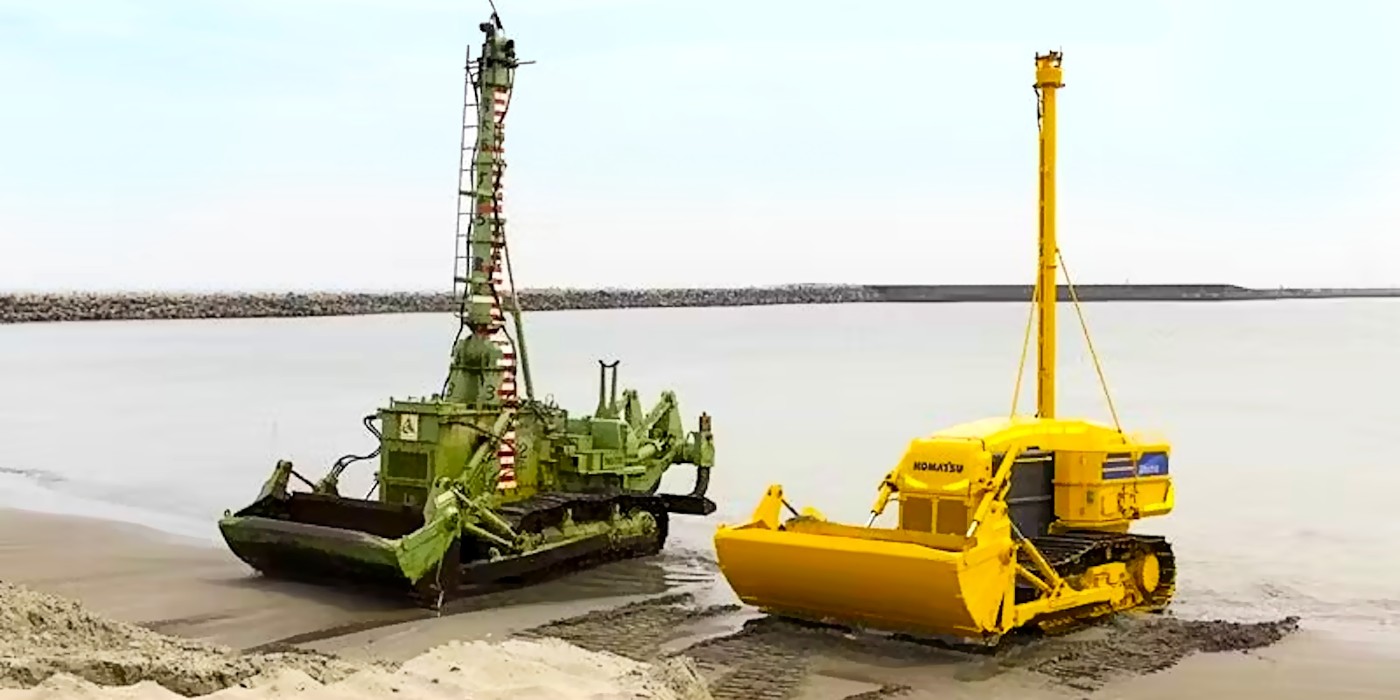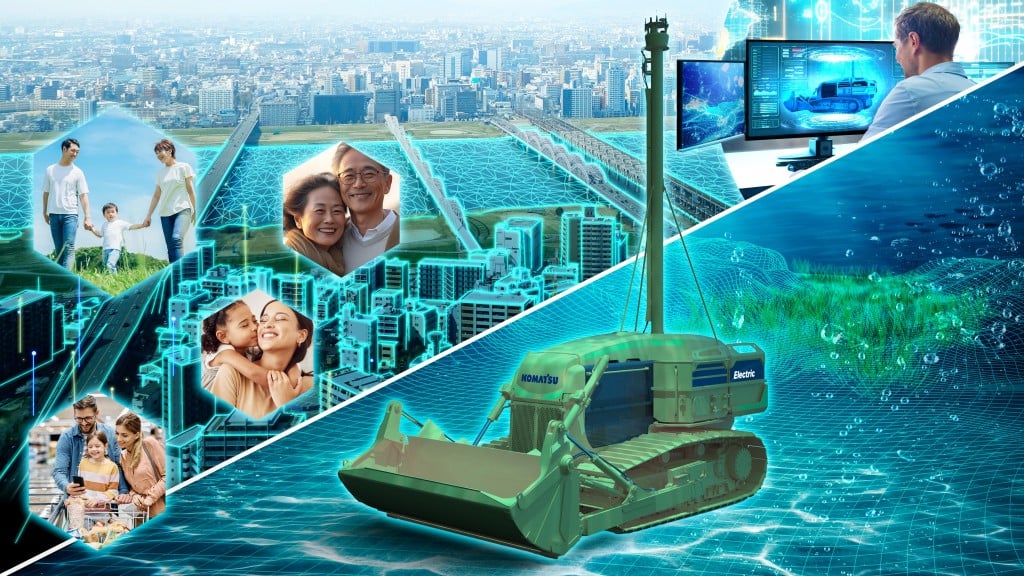
Co-developed by Japanese construction giant Komatsu and the Asunaro Aoki Construction Co., this autonomous electric dozer is built with the underwater construction jobs of the future in mind.
Set to make their public debut at the 2025 Future Society Showcase Project in Osaka, Kansai, Japan, Komatsu’s display is scheduled to showcase cutting-edge construction technologies like super remote control, unmanned operation, and underwater electric drive.
And in case you were wondering: yes, there is a huge need for heavy equipment that’s capable of operating under water.
“In recent years, there has been a growing need for construction work at the dangerous water’s edge and shallow water areas in order to respond to disaster prevention and post-disaster recovery from natural disasters” reads Komatsu’s official press release. “These are becoming more severe and frequent due to climate change as well as the impending massive earthquakes. In addition, the construction industry is experiencing a serious shortage of skilled workers due to the declining birthrate and aging population.”
Komatsu says its underwater construction robots will be able to operate without skilled technicians onboard through automatic control and ICT functions, and at depths of up to 50 meters.
Komatsu developed its first radio-controlled amphibious bulldozer in 1971, and has sold 36 units in Japan and overseas. The underwater Komatsus have worked on more than 1,200 underwater construction projects globally, including post-disaster reconstruction after the Great East Japan Earthquake and Tsunami.
No word yet on specs for the vehicle, but it’s assumed to use the same Proterra-developed lithium-ion batteries as Komatsu’s other EVs. We’ll know more after the dozer’s official debut at the 2025 Future Society Showcase.
Electrek’s Take

In the before time, underwater construction equipment was limited by their snorkels’ ability to get enough air down into the diesel engine, where a huge amount of energy was spent pushing spent exhaust gases back up to the surface and out of another snorkel. It was a horribly inefficient system, but it was what we had.
Now, we have BEVs. BEVs that can go down deeper and, with cable power, stay down longer than comparable diesel. With the rise of autonomous operation coinciding with rapidly advancing electric vehicles, the future of underwater construction is looking really interesting!
SOURCE | IMAGES: Komatsu, via Heavy Equipment Guide.
